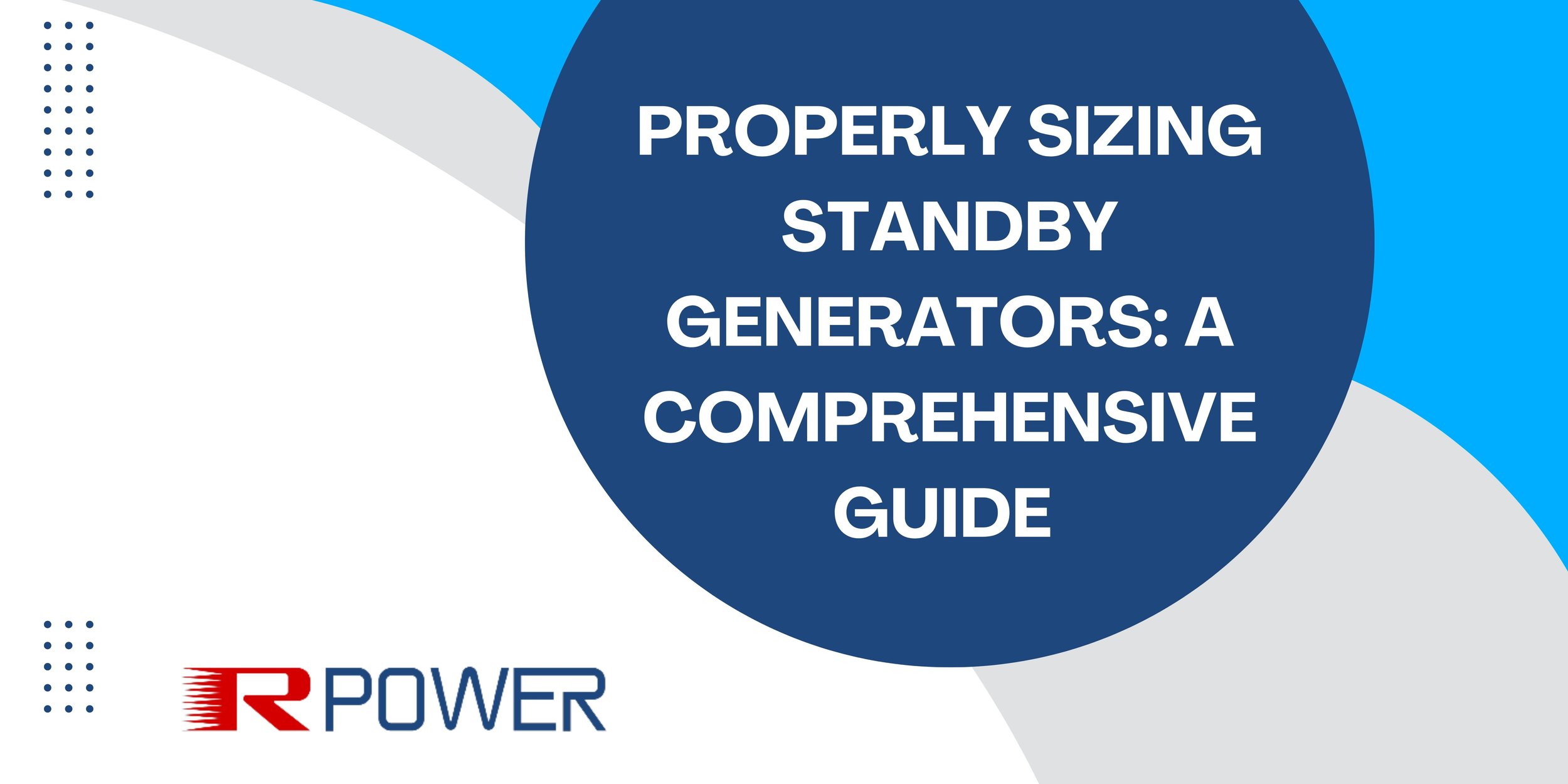Properly Sizing Standby Generators: A Comprehensive Guide
A standby generator is essential for providing power during an outage, ensuring the continued operation of critical systems and equipment. Properly sizing a generator involves considering various factors, such as power requirements, fuel source, annual run hours, space availability, and more. This article will delve deeper into these aspects to help you choose the optimal generator for your facility.
The first step in properly sizing a standby generator is knowing the power requirements for all of the equipment and loads that are desired to remain running during an outage. This could be just a small subset of the overall facility load where the generator is designed to provide power only to the critical systems and emergency lighting for personnel safety. Other times the generator is sized for the full facility based on the historical electrical usage of the site, or the service size and equipment schedule on new building designs.
After determining the power output required by the generator, there are additional design aspects that should be considered when choosing the optimal generator for your facility as well. These include the use case for the generator, the availability of natural gas at the site, the anticipated run hours each year, the space available for a solution to be installed, the noise requirements at the site, how quickly the generator needs to be online, N+1 or N+2 design, if there is any other equipment that will be paired with the generator, and the emissions requirements for the area to name a few. Let’s consider these design aspects in more detail.
- Determining Power Requirements: The first step in sizing a generator is to determine the power requirements of the equipment and loads that need to remain operational during an outage. This can range from a small subset of the overall facility load, such as critical systems and emergency lighting, to the full facility based on historical electrical usage, service size, and equipment schedule. Loads with large inrush requirements like HVAC compressors and electric motors also play a large roll in sizing a generator as they can have very high starting power requirements if not paired with a soft start or VFD. Carefully assess your facility’s needs to determine the most appropriate power output for your generator.
- Use case: A generator can be used temporarily in cases of emergency when the electric Utility has an outage and provide power only for the duration of the outage. Generators can also be used as the sole power source to a facility where there is no Utility available. A generator can also be used to provide more value by being used intermittently for different needs such as providing Grid relief in times of high demand, reducing peak demand charges of facilities, avoiding transmission charges, or feeding power back to the Grid. Determining how the generator will be used will have a large impact on choosing the right solution to fit the application.
- Fuel Source and Availability: Generators can run on various fuel sources, such as natural gas, diesel, or propane. Consider the availability and accessibility of fuel sources at your site when selecting a generator. Natural gas, for instance, may be a more convenient and eco-friendly option if it is readily available.
- Annual Run Hours: The anticipated run hours per year will impact the generator’s rating from the manufacture. Manufactures will provide emergency standby, prime power, and continuous duty rating based on ISO 8528 standards. A generator that is expected to run frequently will need to be more robust and will have higher maintenance requirements and fuel consumption costs than one that is used only occasionally.
- Space Constraints: The available space for installing a generator will influence the size and configuration of the unit. Ensure that there is adequate space for the generator, ventilation, and any associated equipment. Additionally, consider any potential future expansions or modifications that may affect the installation.
- Noise Requirements: Generators will generate noise during operation. Depending on your facility’s location and local regulations, you may need to consider noise attenuation measures such as acoustic enclosures or barriers to minimize disturbance to the surrounding environment.
- Startup Time: The time it takes for the generator to come online after a power outage is crucial for maintaining the continuity of critical systems. Assess your facility’s specific requirements to determine the appropriate startup time for your generator or if additional support is needed from a battery or UPS to bridge the gap.
- Redundancy and Reliability: An N+1 or N+2 design, which includes additional generators as backups, can increase system reliability in case one generator fails. Consider your facility’s tolerance for downtime and the importance of maintaining continuous power when determining the appropriate level of redundancy.
- Integration with Other Equipment: In some cases, generators may need to be paired with other equipment, such as solar photovoltaic panels, batteries, or other generators. Evaluate the compatibility of the generator with existing or planned equipment.
- Emissions Requirements: Local and federal regulations may impose specific emissions requirements on generators. Check with the relevant authorities to ensure that your chosen generator complies with these regulations to avoid potential fines and penalties.
Properly sizing a standby generator is crucial for ensuring that your facility remains operational during power outages. By carefully considering factors such as power requirements, fuel availability, run hours, space constraints, and more, you can choose the most suitable generator for your needs. Consulting with a team of professionals will help guide you through the selection process, ensuring that your investment in a standby generator is both efficient and effective. RPower is uniquely positioned to provide our customers with the most optimized solution to address their power resiliency needs, ESG targets, and to never have to worry about a utility outage impacting their day-to-day business.


